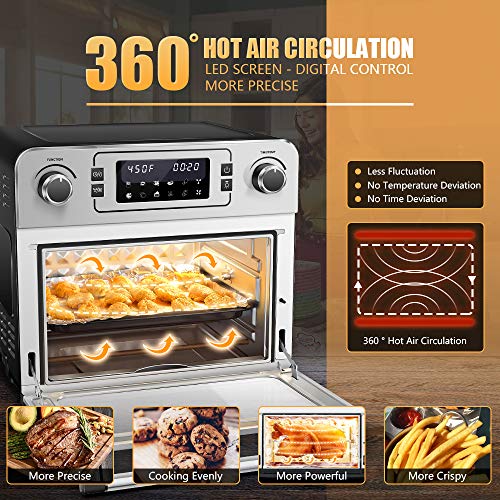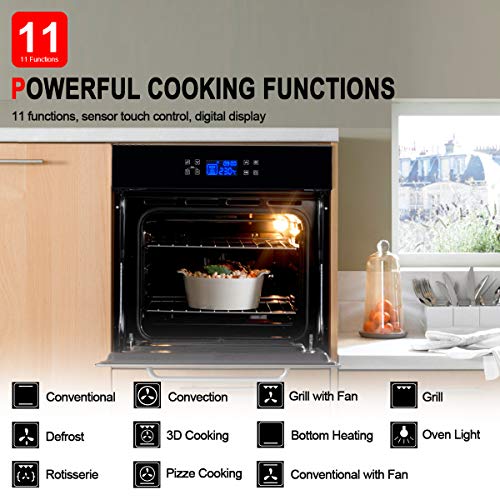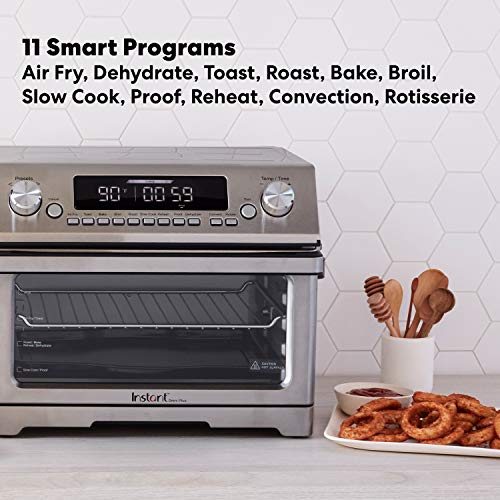How Do I Know The Kind Of Oven I Have?
You can know the kind of oven you have by the features.
For ovens, the features include factors such as the design, heat distribution, source of power (does it use gas or electricity?) , how it is mounted ( is it free standing or wall mounted?) and more. Therefore to know what kind of oven you have, you just need to know the distinguishing features.

So check out some examples of features that would help you determine the type of oven you have:-
Table of Contents
How Does The Oven Distribute Heat
There are two major ways in which heat is distributed in an oven and they are convection and conventional.
So what are convection ovens?
Convection ovens are designed with fan in the cooking area. This fan blows on the heating element of the oven to circulate hot air throughout the oven. This results in the every part of the oven having the same temperature . So if you are baking a batch of cookies or muffins on all 3 racks of your oven, you are assured that they all would be done at the same time. Not only that but your food would cook all round evenly and faster too!
With this brief definition, you now know that if your oven distributes heat by means of a fan that blows the heat all around the oven then you have a convection oven.
What about conventional oven?
Conventional ovens, on the other hand, transmit heat heat from bottom to top of the oven cavity. This means that the oven would have cold and hot spots which doesn’t bode well for your baked goods.
Furthermore, conventional ovens take a longer time to heat up.which means a longer cooking time than convection ovens. Additionally, if you are using all three racks of your oven, you would run into some difficulties. One of such issues is that the food on the top rack would be done before the ones below.
So if your oven distributes heat from bottom to top then you have a regular or conventional oven.
Source of power
Do you plug your oven to electricity to function? Then you have an electric oven. If you have to connect your oven to a gas line then you have a gas oven.
Placement Of The Oven
The placement of your oven in the kitchen also determines what kind of oven you have. Some ovens can be mounted on the wall or fitted between your kitchen cabinets. The ones that are fitted between cabinets are known as free standing oven and have the advantage of being fitted or placed anywhere you want in your kitchen. Whereas the wall mounted has to be placed on the wall.
Some ovens on the other hand are countertop ovens. This means that they are designed to be placed on a countertop.
Each of these placement designs has their advantages and disadvantages. What works for one may not work for the other.

These three major features are distinguishing factors to knowing the kind of oven you have. We would now go on to give you a table of comparison of both types of oven and also highlight their advantages and disadvantages.
Table of Comparison Between Conventional and Convection Ovens
Conventional Oven |
Convection Oven
|
|
Source of Power |
Can either be powered electrically or with gas | Can be gas or electric |
Method of Heat Distribution |
Heat is distributed from bottom to top of the oven cavity | Heat is distributed all around the oven by means of a fan in the oven cavity |
Placement in the Kitchen |
They are mostly free- standing range that can be installed with a cabinet system. | Can be wall mounted, free standing or countertop |
Advantages |
Easy to use( has little or no learning curve), Usually comes in basic designs and intuitive controls, Most recipes that are available are meant for conventional ovens, Needs minimal maintenance, Is less prone to malfunctioning because of its simple design and configurations, Most conventional ovens come at affordable prices. | Cooks food faster and produces evenly cooked meals due to the method of heat distribution, is well suited for baking large batches of baked goods such as cookies and muffins, provides a wide variety of cooking options, enables food to brown beautifully while retaining moist and succulent interior , energy efficient due to shorter cooking time, comes in a wide price range. |
Disadvantages |
Takes longer time to heat up due to the method of heat distribution, consumes more energy, takes longer time for food to get done, produces unevenly cooked meals due to the presence of hot and cold spots in the oven cavity, requires that you monitor your cooking closely to achieve perfect results, limits the options of recipes that can be made as most conventional ovens are best for baking and roasting. | Has a higher learning curve as majority of recipes are made for conventional ovens, More prone to malfunction due to extra fancy features, Although it is adaptable to a wide range of recipes, convection ovens are not good for baking delicate treats such as soufflés and angel food cake. |
The above points are not the only facts about conventional and convection ovens. There’s so much more to these two types of ovens but we feel that the above information would suffice for now.
Click here to check this out and buy on Amazon
Check out these articles for tips and recipes and more information about your kitchen equipment :-
- 197 Cake Recipes – The Ultimate Guide
- How To Use A Bundt Pan
- Best Food Processor For Dough
- How To Make A Simple Cake At Home
- Best Toaster Oven For Baking
- What To Make With Lemon Cake Mix
Different Types Of Ovens
There are different types of ovens but time and space would fail us to give you full details of each type. However, we would give you a list of examples of different types of ovens. This would help you find out the different types of ovens that there are and the suitability of each one of them to your specific needs.
List Of Different Types Of Ovens:
Wall mounted/Built in oven
Wall
Empava 24″ Built-in Convection Single Wall Oven
Freestanding oven – NEW IMPERIAL RANGE 36″ ELECTRIC RANGE 6 ROUND PLATE ELEMENTS 26-1/2″ OVEN IR-6-E
Countertop oven – Oster French Convection Countertop and Toaster Oven
Microwave oven – Toshiba EM131A5C-SS Microwave Oven with Smart Sensor
Steam oven – Tovala Gen 2 Smart Steam Oven
Toaster Oven – Luby Large Toaster Oven
Conclusion
Now that we have explored the differences between conventional and convection ovens, you may be wondering whether you would need to buy both. Let us assure you that you do not need to buy two types of ovens. Check out one of our product reviews on best oven for baking if you want some help with choosing the best oven for you.
How Do I Know The Kind Of Oven I Have? – FAQs
What are the different types of oven?
There are so many types of ovens and they are delineated by some factors. These factors include design and features. There are built-in/wall mounted ovens, free standing ovens and countertop ovens. This category is based on the design and where and how they can fit in your kitchen.
Another category is based on size and capacity. Ovens that can be grouped into this category are single ovens, double ovens, double in built ovens and compact ovens.
One other feature that is used to delineate ovens is their speciality features. So an oven can be described as a steam oven because it is specially designed for steaming food. Others are described as toaster ovens because their primary function is for toasting food.
So going by the above you can clearly see that it would not be right for us to tell you that there are 3 or 4 or 5 types of ovens.
Click here to check this out and buy on Amazon
How Can You Tell The Difference Between Gas and Electric Oven?
You can tell the difference between gas and electric oven by the heating element and the placement of the heating element. Gas ovens have burners at the bottom of the oven cavity while electric ovens have heating elements at the top and bottom of the oven cavity.
A gas oven that is convection style or that has convection cooking function would have a fan in the oven cavity. This fan is usually located above the burner (so as not to blow off the flame) and helps to circulate hot air (heat) around the oven.
Most electric ovens are convection style. Some of them have two heating elements while others have three. But one thing they all have in common is the fan that blows in the oven to circulate heat evenly all over the heat.
Which Type Of Oven Is Best?
The type of oven that’s best depends on what fits your daily needs. A person who bakes a lot would require a different kind of oven than one who uses the steaming method frequently.
Some ovens are quite versatile and would fit a wide range of recipes while others are more restrictive.
Convection ovens have more versatile models than conventional ovens. One great example of such a model is Cuisinart TOA-60 Convection Toaster Oven Airfryer.
Convection ovens are great for roasting and making large batches of baked treats. If you have delicate recipes, a conventional oven is your best bet.
That said, look out for the features of any oven you are considering and that would help you make the right decision.
Is It Better To Bake With Gas or Electric?
The argument of whether it is better to bake with gas or electric has been on for a while now. But the truth is that some bakers prefer electric while others prefer gas for baking.
Gas ovens do not heat evenly like electric ovens and this makes the oven to have cold and hot spots. This makes things baked in gas ovens not to cook evenly.
That said however, you can always get your conventional oven to bake perfectly by monitoring whatever you are cooking in the oven.
Electric ovens on the other hand bake evenly and perfectly because of its method of heat distribution.
Refer to the difference between conventional and convection ovens.
What Three Types Of Ranges Are There?
The three types of ranges that are differentiated by the type of fuel they use include gas ovens, electric and combination of gas and electric.
Under these three categories are single ovens and double ovens. Some gas ranges have gas burners on top with electric ovens underneath while some others have gas burners and oven cavity that can use either conventional and convection cooking.
Ranges in general are usually freestanding. This means that you can fit them into the cabinetry in your kitchen in any position you like.
Click here to check this out and buy on Amazon




